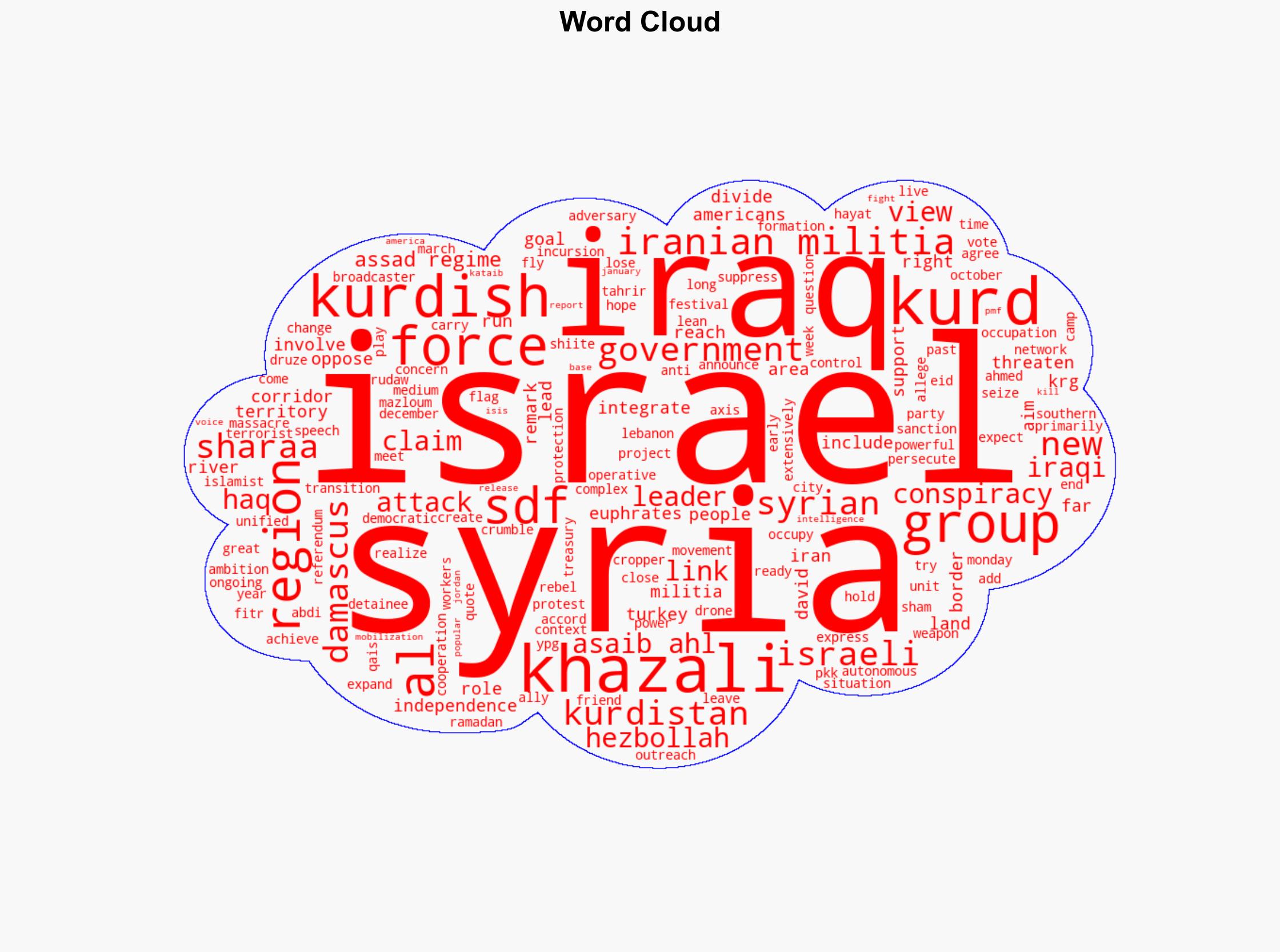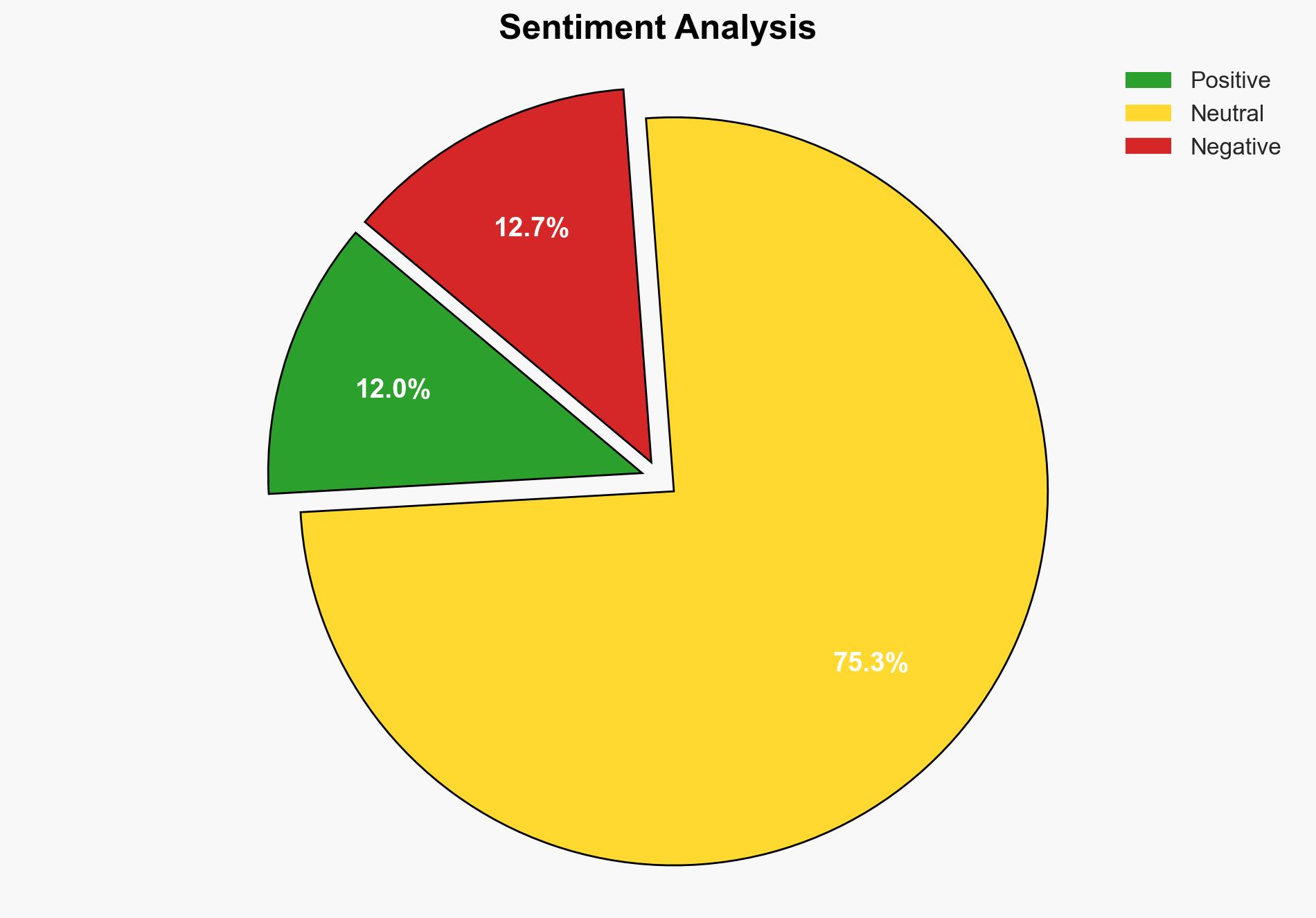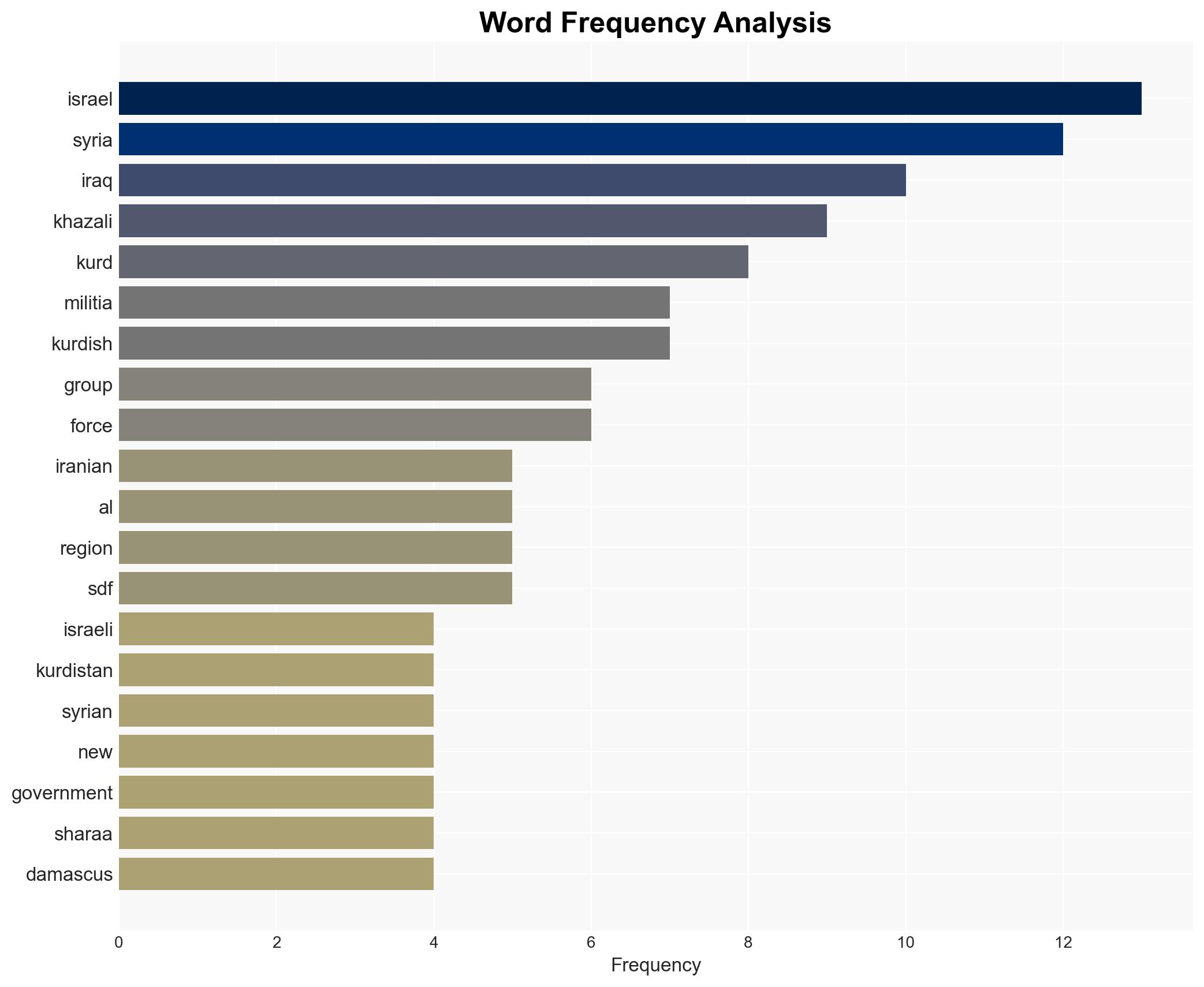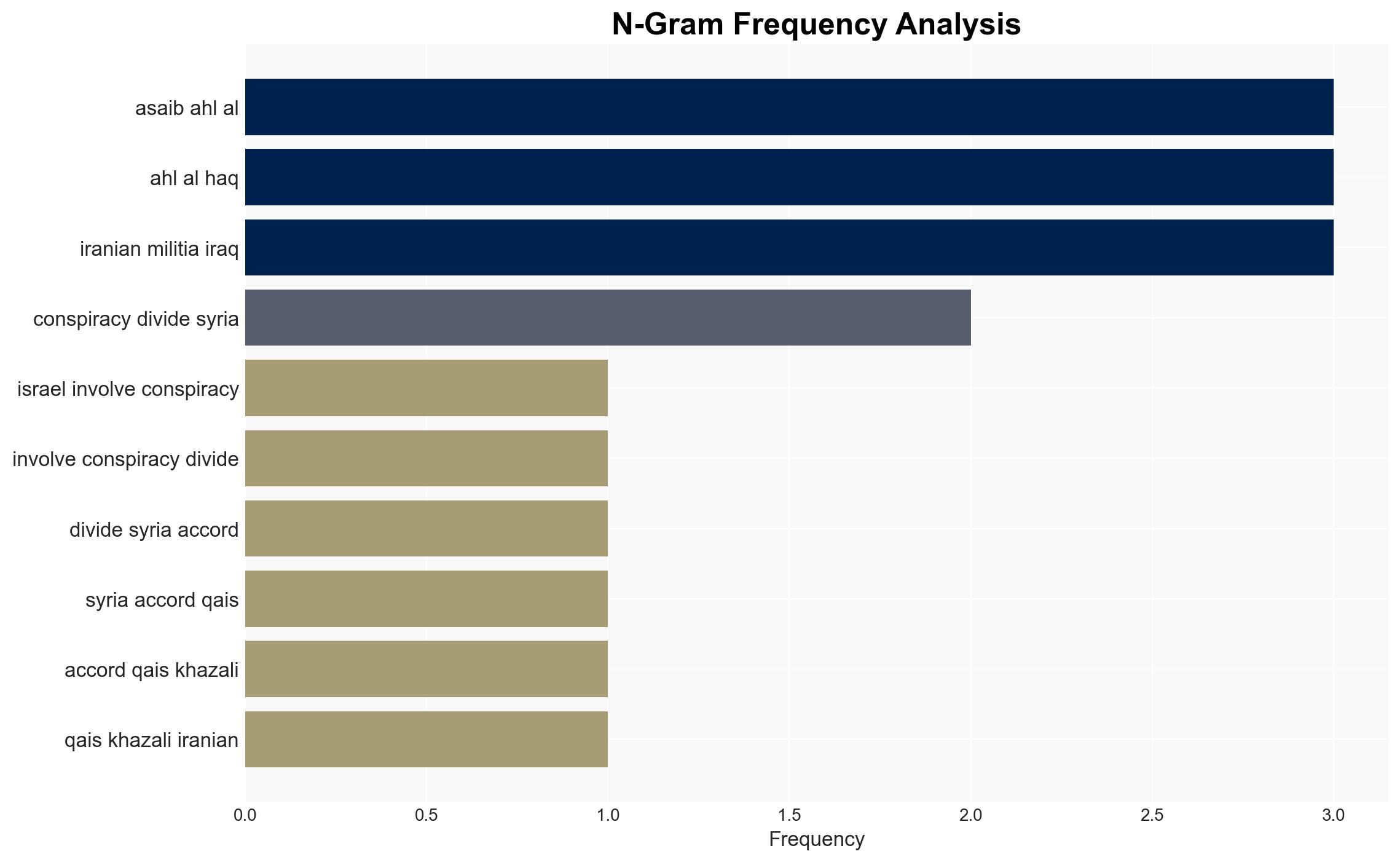Israel involved in conspiracy to divide parts of Syria Iraqi militia leader claims – The Jerusalem Post
Published on: 2025-04-02
Intelligence Report: Israel involved in conspiracy to divide parts of Syria Iraqi militia leader claims – The Jerusalem Post
1. BLUF (Bottom Line Up Front)
Recent claims by Qais Khazali suggest a conspiracy involving Israel to divide parts of Syria, potentially impacting regional stability. The allegations focus on the so-called “David Corridor” project, which purportedly aims to expand Israeli influence to the Euphrates River. This situation could exacerbate tensions between Israel and Iranian-backed militias in Iraq and Syria, with potential implications for Kurdish regions and broader Middle Eastern geopolitics.
2. Detailed Analysis
The following structured analytic techniques have been applied for this analysis:
General Analysis
Qais Khazali has accused Israel of a strategic plan to divide Syria and extend its control to the Euphrates River. This claim is tied to the “David Corridor” project, which allegedly involves cooperation with Kurdish forces. The remarks come amid ongoing efforts to integrate Kurdish forces into a new Syrian government, potentially altering the power dynamics in the region. The involvement of Ahmed Sharaa and the Syrian Democratic Forces (SDF) in these developments is notable, as is the opposition from Iranian-backed militias and their support for the Assad regime.
3. Implications and Strategic Risks
The allegations of Israeli involvement in Syria could heighten regional tensions, particularly between Israel and Iranian-backed groups. The potential division of Syria poses risks to national security and regional stability, with possible repercussions for Kurdish autonomy and the balance of power in the Middle East. Economic interests may also be affected, particularly if the situation escalates into broader conflict.
4. Recommendations and Outlook
Recommendations:
- Engage in diplomatic efforts to de-escalate tensions between Israel and Iranian-backed militias.
- Monitor developments in Syria closely, particularly regarding the integration of Kurdish forces into the government.
- Consider strategic partnerships with regional allies to mitigate risks and enhance stability.
Outlook:
In the best-case scenario, diplomatic efforts could lead to a peaceful resolution and stabilization of the region. The worst-case scenario involves an escalation of conflict, potentially drawing in additional regional actors. The most likely outcome is a continued state of tension, with sporadic clashes and ongoing diplomatic negotiations.
5. Key Individuals and Entities
The report mentions significant individuals and organizations but does not provide any roles or affiliations. Key individuals include Qais Khazali and Ahmed Sharaa. The entities involved are the Syrian Democratic Forces (SDF) and various Iranian-backed militias.




